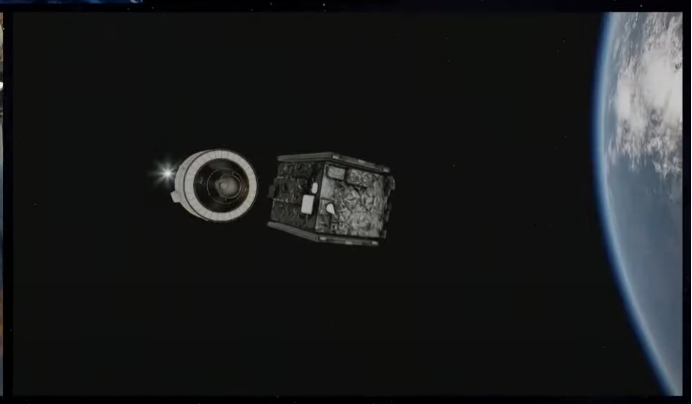
The European Space Agency (ESA) has successfully launched its JUpiter ICy moons Explorer (JUICE) mission, which will study Jupiter’s icy moons – including Europa, Ganymede, and Callisto – in an attempt to find out if they could support life.
The spacecraft was launched from French Guiana on an Ariane 5 rocket and is expected to arrive at Jupiter in 2029, where it will spend at least three years studying the gas giant and its moons.

The spacecraft will arrive at Jupiter in 2031 after an eight-year journey, during which it will undergo four gravity-assist flybys with Earth and the Moon to gain speed. Upon arrival, Juice will study Ganymede, Europa, and Callisto in detail, with the hope of determining whether life can exist in other environments in the solar system or beyond.
The spacecraft is equipped with 10 powerful instruments, including remote sensing and geophysical tools. Juice will follow in the path of previous Jupiter missions, such as Voyager-1 and -2 and NASA’s Juno spacecraft, and provide new insights into the gas giant and its moons.
Galileo Galilei was the first person to observe Jupiter through a telescope in 1610. However, it wasn’t until 1973 that humans were able to obtain a clear image of the planet. The Pioneer-10 spacecraft managed to survive the asteroid belt and capture stunning images of Jupiter’s colorful atmosphere.
JUICE will use a suite of scientific instruments to study the moons’ geology, composition, and potential habitability, as well as the effects of Jupiter’s intense radiation on their surfaces. The mission is seen as a major step forward in the search for life beyond Earth.

Jupiter, the largest planet in our solar system, has long fascinated scientists and astronomers. Recently, there has been a renewed interest in studying the gas giant and its four largest moons, known as the Galilean moons. Of these four moons, three have been found to have vast oceans of liquid water beneath their icy surfaces – Europa, Ganymede, and Callisto.
Scientists believe that these oceans could potentially harbor life, and there are plans underway to send missions to explore these moons and study their oceans in greater detail. The Europa Clipper mission, set to launch in the 2020s, will study Europa’s surface and subsurface to determine the composition and potential habitability of its ocean.
Similarly, the European Space Agency’s Jupiter Icy Moons Explorer (JUICE) mission, set to launch in 2022, will study Ganymede and Callisto in addition to Europa.
The study of Jupiter and its icy ocean moons holds great promise for our understanding of the origins of life in our solar system and beyond.
Ganymede, Callisto and Europa are three of Jupiter’s four big Galilean moons, which are so named because they were discovered by famed Italian astronomer Galileo Galilei in the early 1600s.
For breaking news and live news updates, like us on Facebook fb.com/thevoiceofsikkim or follow us on Twitter twitter.com/thevoicesikkim and Instagram instagram.com/thevoiceofsikkim. Visit www.voiceofsikkim.com.







